The other World’s Fair innovation
Image: Disney
Pirates of the Caribbean never could’ve come together if not for the advances WED Enterprises made in the build-up to the 1964 New York World’s Fair. In particular, they attacked an ongoing problem at Disney, the previously mentioned crowd control issue, one they still battle today. The problem with suggested haunted house and pirate museums was that the park guests wouldn’t move through the building in uniform fashion. Disney’s own words above reflect how passionate he was about his park operating with clockwork precision. The chaos of mercurial travelers determining the throughput of his attractions was wholly unacceptable.
A breakthrough occurred while engineers plotted for their quartet of World’s Fair exhibits. They developed a novel form of tracking that could provide uniform exploration of an environment. In other words, they could control the pace and movement of the people enjoying Disney rides. Two different solutions presented themselves. One technology they patented was the Omnimover, a ride cart that gave Disney the power to determine the rider’s line of sight.
The other originated from the boats employed for Pepsi’s It’s a Small World. Those vehicles ran on underwater tracks, silently pushed down the path by propulsion jets. Both inventions achieved two laudable goals. They would reduce the stress on park guests since they only had to sit back and savor the scenery. Simultaneously, Disney would define the flow of traffic throughout the applicable attractions.
Through this solution, Imagineers could exponentially increase the hourly volume of guests for their impending pirate attraction that was no longer a museum. It spiked from a projected 500 visitors per hour to 3,600. Yes, they boosted productivity by a factor of seven. This was the difference between half the daily Disneyland visitors leaving disappointed because they couldn’t enjoy the pirates ride versus everyone having the ability to go through it multiple times.
Who, me?
Image: Disney
With all the puzzle pieces finally aligned properly, all that remained was for Disney employees to build the ride. This is another opportunity to discuss the oddity of working for Uncle Walt. He had a maddening ability to uncover talents in his employees that even they didn’t know that they had.
Take, for example, the man affectionately known as X. Francis Xavier Atencio started to work for Walt Disney when he was 19-years-old. The Disney Legend stayed at the company for 46 years, taking time away only to fight during World War II. From 1938 until the opening of Disneyland, X’s job was the obvious one at the company. He was an animator by trade but by his boss’s evaluation, he was only a good one. Disney was nothing if not honest with his charges.
What was remarkable about Uncle Walt was his nose for talent, particularly the maximization of it. In Atencio, he saw an insanely creative mind that didn’t quite translate when he put pen to paper, at least not when it came to drawing. One day, Disney tapped his staffer on the shoulder and said a few fateful words. “X, it’s time for you to move.” Atencio has noted on multiple occasions that his employer treated staff members like staff pieces, positioning wherever they made the most sense on the board in his mind’s eye. In the early days of Pirates of the Caribbean as a boat ride, X made the most sense as a writer.
The dramatic change in his work routine was understandably disruptive to X. He noted that his new co-workers had no idea why he was suddenly there, and he didn’t have a good answer for them. He didn’t even have an official assignment when he arrived. He was to spend his time thinking and being creative. In truth, he felt like a fish out of water. Animators working for Disney rarely worked on their own projects at the time. They operated at the whim of their leader, and they quite liked that.
Faced with newfound freedom, X felt paralyzed. After a few days, the boss called with new instructions. They were less nebulous in tone. Disney told his protégé, “X, I want you to write the script for the Pirates of the Caribbean attraction. There will be scenes with pirates and townspeople and so forth, and I want you to write all the dialogue.” Several aspects of this surprised Atencio, the primary one being that several established Disney Imagineers such as Marc David, Claude Coats, and Bob Gurr had already nearly finished the project.
But Walt, I’m not a writer…or a lyricist
X’s job was to bring everything together. Uncle Walt requested that Atencio craft an amusing storyline. His work should match the dazzling AAs and set pieces the other Imagineers had designed. It wasn’t easy since the pirates themselves were quite scary looking. The attention to detail caused a sense of foreboding amongst the employees, and Disney rightfully worried that small children might steer clear. This was especially problematic at a time when guests were still paying for individual attractions.
As an artist, the company founder wanted a revolutionary new attraction. As an expert businessman, he understood that Pirates of the Caribbean had to pay for the entire New Orleans Square expansion. The price tag for it had ballooned to $15 million, almost as much as the $17 million outlay for all of Disneyland 12 years prior. Part of the reason this section cost so much was the never-ending saga of The Haunted Mansion, which wouldn’t be ready for guests until 1969, three years after the debut of New Orleans Square.
Disney as a company was struggling with the financing of the new development. The boat ride had to be a hit, especially since over half the cost of New Orleans Square was the $8 million Disney spent on Pirates of the Caribbean. The plan was to list it as an e-ticket ride at a cost of $0.75 (roughly $5.50 today). If kids didn’t want to get on the boat, it’d be a financial disaster for the company.
Luckily, Disney yet again chose the perfect person for the assignment. The new environment benefited X greatly. His creative juices quickly flowed, and he suggested the first signature element of the ride to his boss. It was the song listed at the start of this article, “Yo-Ho (A Pirate’s Life for Me).” Atencio felt that a hearty sea shanty was the perfect solution to the problem of scary pirates.
The only catch was that Atencio expected one of Disney’s accomplished lyricists to run with the idea. He was taken aback when Disney simply stated, “Oh, this is good. If you need some help with the music, get George Bruns to score it.” And thus, a lyricist was born from a combination of inspiration and desperation. The singalong tune would put guests of all ages at ease while also getting them into the spirit of sailors on a treasure hunt. His instinct proved correct as it has become the penultimate earworm across the Disney theme parks.
X also mastered the art of the pirate joke. His first set piece suggestion involved a nefarious auctioneer selling off a number of women. While nobody could pitch the same scenario today, it instantly set the tone for the integration of existing Pirates of the Caribbean illustrations and AAs with Atencio’s acerbic wit. He remembered that pirate tales are ribald, too. One of the jokes from those early sessions involved a euphemistic pirate asking for a lady to show her larboard side. You don’t hear that in many family rides.
The humorous touches were critical to early reception of Pirates of the Caribbean. Even with the humor added, many early writers described it as a scary ride. Imagine how foreboding it would have been without the easy laughs. His script proved so perfect that upon completion of the attraction, the company switched him over to The Haunted Mansion, the triumph of his career. Fittingly, the man who considered himself an animator first and foremost wrote equally memorable lyrics for that ride, a song known as “Grim Grinning Ghosts (The Screaming Song).”
Tying everything together
The iconic attraction was nearly ready by this point. It had the perfect story and accompanying song. The AA technology seemed so lifelike that Disney himself worried that the technology was evolving at an alarming rate. All that was left were the set pieces and the boat ride itself. Oddly, the latter portion proved more challenging.
During the 1950 and 60s, the concept of getting wet on an amusement park ride wasn’t a popular notion. Disney execs worried about this a great deal with both It’s a Small World and Pirates of the Caribbean. They solved the problem with the Pepsi attraction by running the boats at a glacial speed. The pirate ride proved trickier. Again, commerce created conflict.
Disneyland needed that guaranteed throughput of 3,600 people per hour to turn a profit. The size of the attraction was so large that the boats had to move more rapidly than on It’s a Small World. This wreaked havoc with their plans because pushing the vessels down the path inevitably created splash. Today, everyone accepts that they’ll take on some water during Pirates of the Caribbean. In 1966, however, the thought horrified Uncle Walt.
Disney demanded that his Imagineers strap together a lifting apparatus that would carry him through all phases of the boat ride. He identified all the dangerous spots that were sloshing him. Then, he specified the steps his employees should take to solve the aquatic issues. What’s amazing about his dutiful attempts to provide a joyous customer experience is that he was in the final few months of his life, already feeling the effects of lung cancer, even though he had not yet received the diagnosis.
When you think of Walt Disney as a showman, that’s the most fitting imagery: A dying man strapped to an apparatus that drags him through splashing water, all so that he could insure that his guests would never get wet. And the most amazing part is that he went through that waterfall over and over again until he was confident that everything was perfect.
A pirate’s life for all of us
The set pieces, well, you likely know a lot about them. Each part of The Blue Bayou is unforgettable in its own way, which is why several key moments from the attraction were recreated in the Pirates of the Caribbean movie franchise. It’s basically a 10-hour monument of inside jokes from the ride, one of many reasons it’s such a popular film series. Over time, Disney even introduced the show stopping character, Jack Sparrow, into the attraction.
Long before that occurred, even before the ride debuted, Walt Disney himself died in December of 1966. Intentionally or not, Pirates of the Caribbean became his last major attraction. It opened three months and one day after his death. Word spread quickly that his AAs, the newest form of storytelling at Disneyland, were more than worthy of carrying on his legacy as a technological innovator.
Guests from around the world came to see the final story Disney told as well as the futuristic tech he left the world as a parting gift. Pirates of the Caribbean quickly became one of the most popular e-ticket attractions in theme park history. Within months of its debut in March of 1967, Life Magazine reported that its turnstiles were spinning at an amazing rate.
Estimates indicated that roughly a million guests a month were paying 75 cents each to ride Pirates of the Caribbean. At that rate, Disney would have recouped the $8 million investment in the attraction within a calendar year. They would have paid off the entirety of the New Orleans Square in approximately 20 months at that rate.
In other words, the pirate wax museum that morphed into a splash-less boat ride almost instantly proved itself as one of the biggest draws in the history of Disneyland, a feat the film franchise later duplicated. As for the AAs and other special effects, they were so lifelike that the Anaheim Fire Department didn’t want to authorize the attraction. They worried that the fire effects used during one of the set pieces would confuse people so much that they wouldn’t be able to identify when a real fire started. That too is a fitting postscript to the career of Walt Disney.
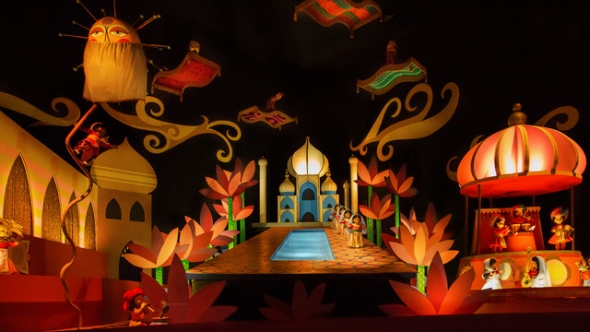
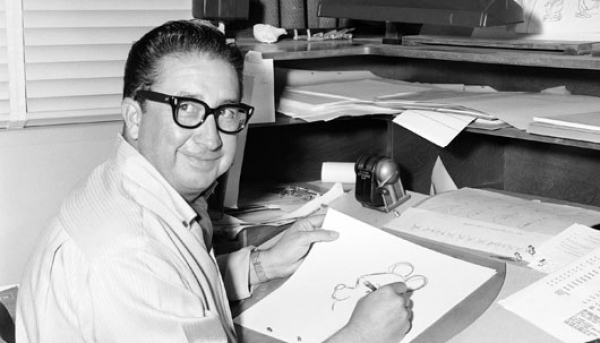
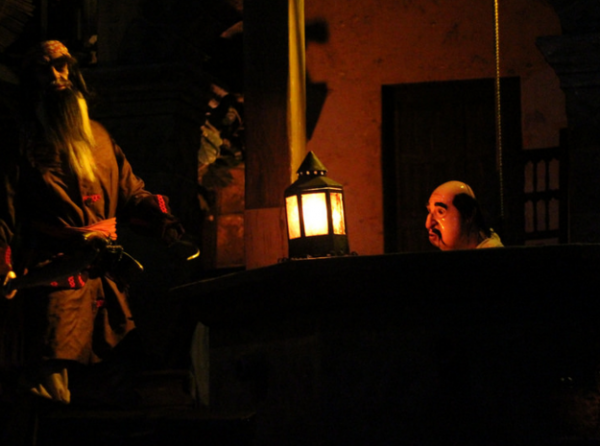
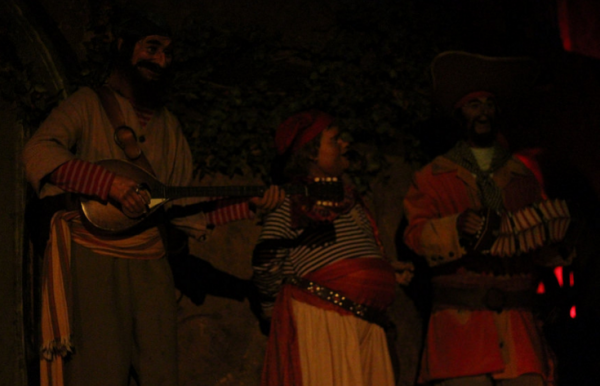
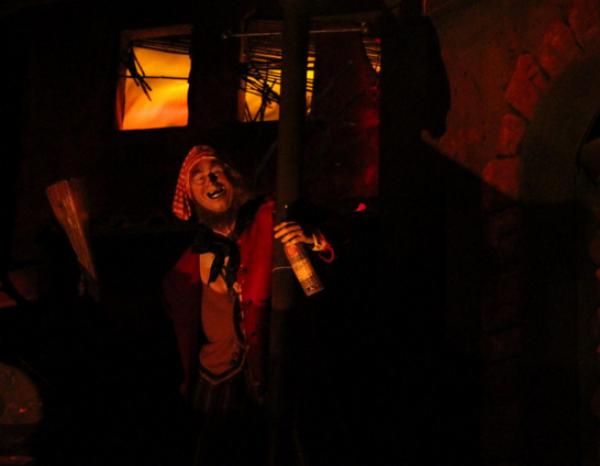
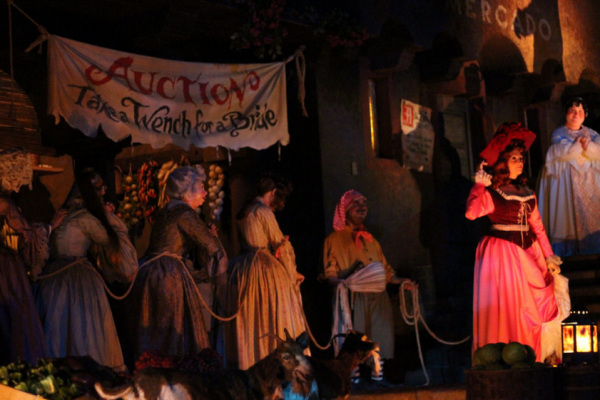
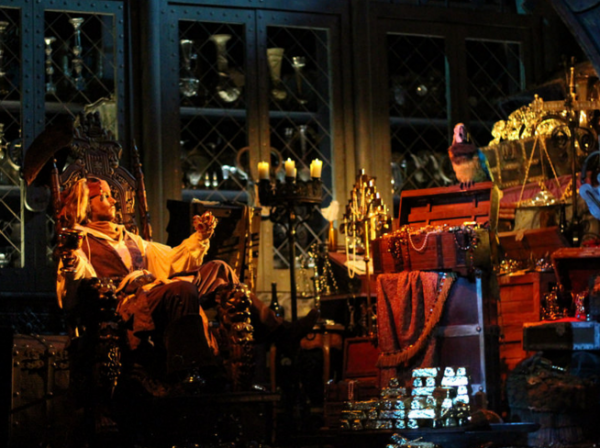

Add new comment